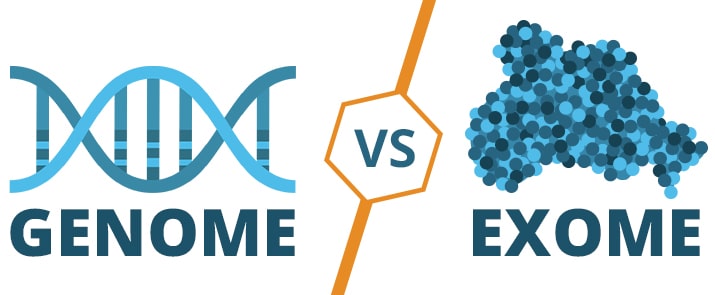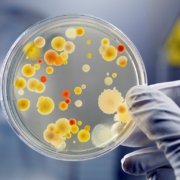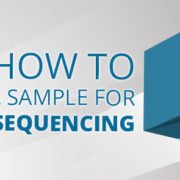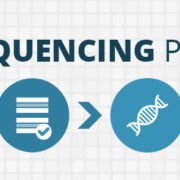Genome, Exome… What’s the Difference?
Genome sequencing is all over the news lately, especially with commercial companies offering sequencing to explore a customer’s ethnic background, recommended diets and fitness plans, and reveal what kinds of diseases they might potentially encounter in their lifetime. With all this talk about revealing our genetic code so easily, let’s take a step back to understand the different types of sequencing, what they can actually tell us, and get better acquainted with what you’re really looking for in the results.
Genome vs. Exome
When an individual says they want their DNA sequenced the first important distinction to make is the difference between a genome and an exome. In a human, there are 23 chromosomes, which are strands of DNA that determine every little detail about a person. The genome refers to the collection of chromosomes that makes up a human being. A human genome has roughly three billion base pairs, which are pairs of nucleotides (adenine, guanine, cytosine, and thymine). The specific pairing sequence of these nucleotides acts like an instruction manual for life. Of those three billion base pairs, only about 30 million (~1%) of them actually work to encode the protein building blocks of organic matter. This is called the exome.
On the surface, it might appear that whole genome sequencing is always the ideal way to sequence an organism, as it gives a researcher access to a complete readout of an organism’s genetic makeup. However, when dealing with such massive data sets that are still in their early stages of functional comprehension, it is often a more useful option to use targeted re-sequencing to isolate and get refined data from a specific region of DNA. It’s quite common for researchers interested in mutations to use targeted re-sequencing for a more focused dataset that is relevant to the research. While much of what is discussed in this article is referring to human genome sequencing, the same can be applied to other organisms, from viruses and bacteria all the way up to complex mammals like canines and felines.
What Are At-Home Genetic Kits Really Sequencing?
At-home genetics kits certainly have become a hot topic over the past couple years. These kits allow customers to swab one’s own cheek or collect saliva and send that sample in a sealed container to the company for sequencing. It is not widely known though that they are more likely sequencing the person’s exome and not the genome. This targets regions of the customer’s DNA that create proteins, which in all fairness, can still provide some level of interesting insights.
Because each region of a chromosome is correlated with specific phenotypes or traits, these companies analyze only the tiny region related to that phenotype and compare it against reference data. For example, when a company examines this exome region against the reference genome of an eastern Asian population, they can determine statistically whether or not the customer’s traits are related to that eastern Asian population versus a northern European population.
These determinations are made through comparing single nucleotide polymorphisms, or SNPs, which are single base pair variances that can be common amongst a certain subset of the population. It is through this genotyping, or analysis of phenotypes, that these companies can help an individual determine what their ethnic background might most likely be.
Likewise, if instead of ethnic traits a company were to analyze and compare exome regions related to health issues, such as diabetes, heart disease, or Alzheimer’s disease, they can determine an individual’s likelihood of developing these diseases at some point in life. While many of these companies do allow their customer to download the raw data that was sequenced, the results that they present to the customer are generally genotyped for a specific purpose and interpreted for them.
So, Why Do Whole Exome Sequencing?
For the average consumer, whole genome sequencing provides an excess amount of data that doesn’t present much useful information for determining anything of value. For one, much of that genome is what some researchers call “junk DNA” simply because it does not actually code proteins. While that does not make this so-called “junk DNA” worthless, it reduces the usefulness of the overall data set when looking at it for known issues to report to a consumer. In fact, in a human, much of this “junk DNA” doesn’t have known purpose or relationship to disease and is currently being researched in order to make that information useful down the road. In addition, whole genome sequencing is comparatively more expensive to both sequence, assemble, and interpret because of its added complexity and size.
While some companies are capable of providing useful information for people looking for unique genetic insights, it is helpful for the consumer to be aware of what they are getting and its limitations. Here at The Sequencing Center we frequently perform targeted re-sequencing, which can include but is not limited to the exome, however, the data generated is directed more for clinical research rather than consumer application.
To learn more about the kinds of sequencing we offer and their applications, visit our website and follow our blog. To find out how we can help with your research or to request a quote, please reach us here.










Leave a Reply
Want to join the discussion?Feel free to contribute!